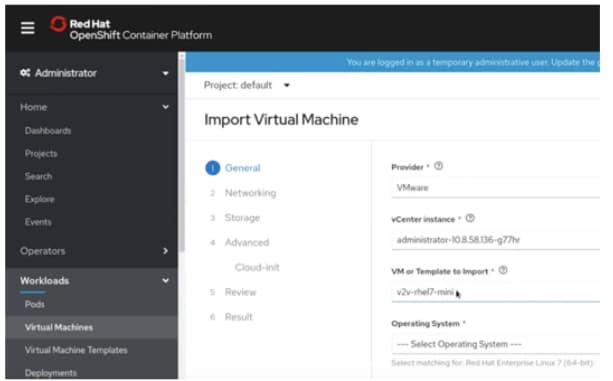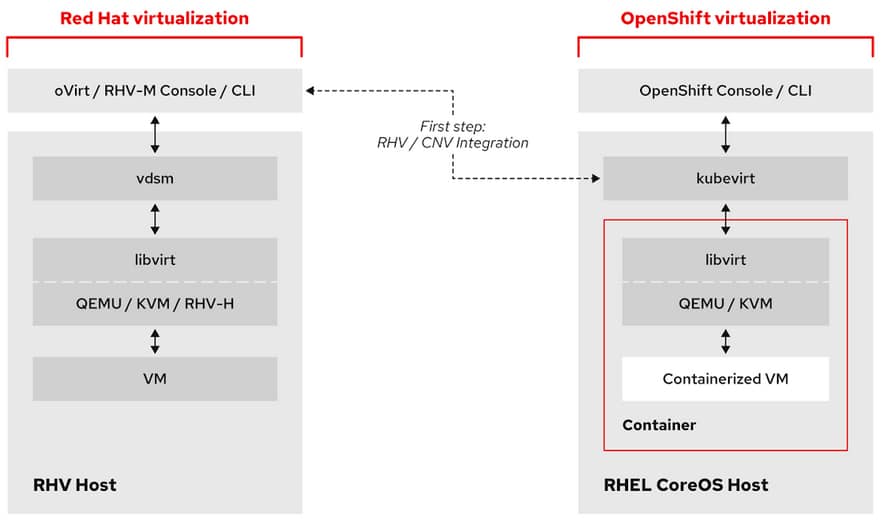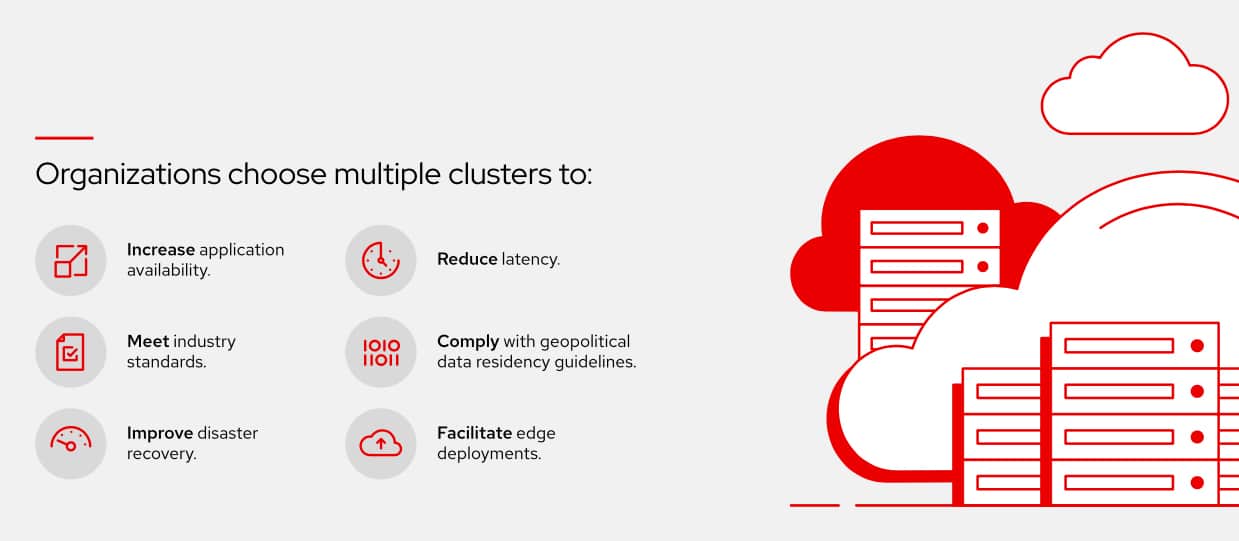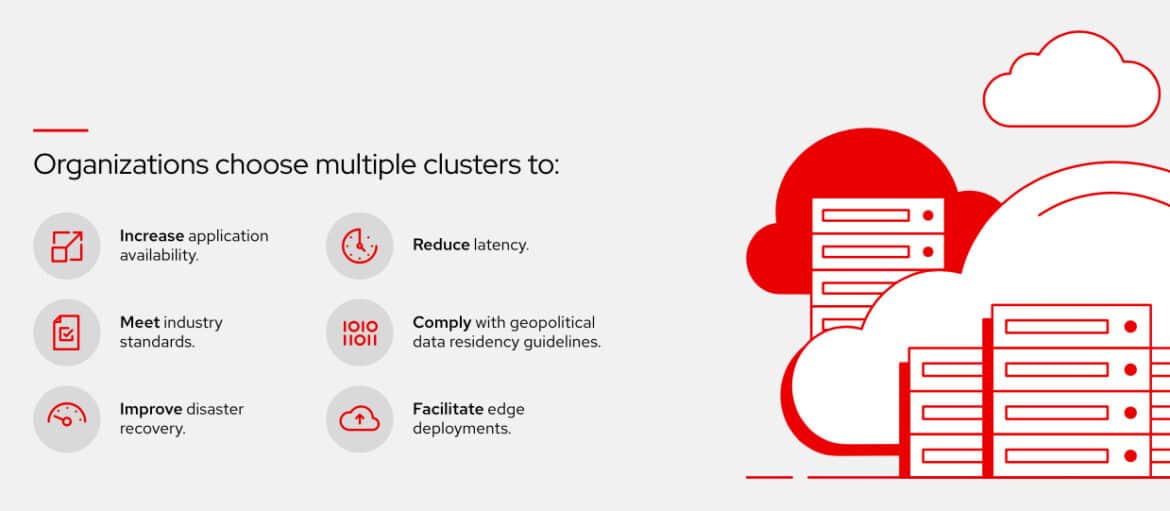Red Hat had its annual summit this week and chose to go virtual as the Covid-19 pandemic is causing more and more shows to cancel or try to get their message out through different avenues. Red Hat and Partners made a handful of announcements. These announcements include OpenShift 4.4, OpenShift Virtualization, Advanced Cluster Management for Kubernetes, Supermicro announced new systems validated with Red Hat Hyperconverged Infrastructure, and MemSQL is available on Red Hat Marketplace.
Red Hat had its annual summit this week and chose to go virtual as the Covid-19 pandemic is causing more and more shows to cancel or try to get their message out through different avenues. Red Hat and Partners made a handful of announcements. These announcements include OpenShift 4.4, OpenShift Virtualization, Advanced Cluster Management for Kubernetes, Supermicro announced new systems validated with Red Hat Hyperconverged Infrastructure, and MemSQL is available on Red Hat Marketplace.
Red Hat OpenShift hits 4.4

At the Red Hat Summit, the company introduced its latest update to their Kubernetes platform, Red Hat OpenShift 4.4. Version 4.4 is all about increasing efficiency and is built off of Kubernetes 1.17. Benefits include:
- The use of the descheduler tool to re-balance the distribution of workloads (Pods) across an OpenShift customer for better efficiency and utilization.
- The ingress controller implementation has been upgraded to use HAProxy 2.0.
- Added support for Stream Control Transmission Protocol (SCTP).
- Self-guided installation now includes support for deployment with full-stack automation (IPI) on Red Hat Virtualization (RHV).
- The release enables the pre-existing infrastructure install experience (UPI) for Red Hat OpenStack Platform and Microsoft Azure.
- Improved support for DNS forwarding
- Red Hat now offers a cost management features for OpenShift clusters, combining both a view of workload and cloud compute spend in one tool.
OpenShift Virtualization Introduced

Along with the above, Red Hat introduced the new feature of OpenShift Virtualization. The company states that the new feature can bring standard VM-based workloads to Kubernetes, helping eliminate the workflow and development silos that typically exist between traditional and cloud-native application stacks. Enhancements and benefits include:
- A consistent development experience across VMs, containers and serverless functions as business-critical applications grow to encompass a blend of these technologies. All components of the enterprise application stack, both traditional and new, can be managed directly through Red Hat OpenShift.
- The ability to modernize VMs or not depending on necessity. VMs can be migrated to OpenShift without the need to fully containerize, enabling them to power mixed applications and be containerized over time (or not).
- Full support for Windows VMs running older versions of Windows back to 2008 with the capability to refactor them over time to use Windows containers and Windows Server 2019 or be maintained purely as VMs.
- Modern, consistent and simplified management by uniting teams on a single, fully-open, production-ready platform that can cover the entirety of an organization’s application estate.
- Support for stateful applications that require storage and traditional on-premises resources, making it easier to repurpose funds and resources to further innovation.
- A sensible on-ramp to next-generation IT skills and operational models with a single, unified platform that builds Kubernetes, serverless and service mesh skills.
Red Hat Introduces Advanced Cluster Management for Kubernetes

Red Hat Advanced Cluster Management for Kubernetes is a management solution that is designed to address the specific management requirements of cloud-native applications that run in container environments. This new solution is for managing Kubernetes clusters across the hybrid cloud, from Red Hat OpenShift deployed on-premises, on bare metal, and on major public cloud providers to native clusters from Amazon Web Services, Google Cloud Platform, IBM Cloud and Microsoft Azure. Tools include:
- True, unified multi-cluster management: With Red Hat Advanced Cluster Management for Kubernetes, users have a single view to create, update, and destroy clusters reliably, consistently, and at-scale across their hybrid cloud deployments running across physical, virtual, private cloud and public cloud environments, and at the edge. This allows organizations to scale applications seamlessly from development to production, helping enable application availability and reduce costs.
- Policy based governance, risk and compliance: Centrally set policies to automatically configure and maintain consistency of security controls required by regulatory, industry or corporate standards. Users can enforce compliance policies with each new cluster, at scale, allowing their fleet to grow and remain conformant to governance or corporate standards.
- Advanced application lifecycle management enables organizations to use open standards to automate application deployments using placement policies that are integrated into existing CI/CD pipelines and governance controls.
Red Hat Advanced Cluster Management for Kubernetes
New Supermicro/Red Hat Systems Announced

Supermicro announced several new systems that are validated and designed to work with Red Hat Hyperconverged Infrastructure. The new systems include BigTwin, SuperServers, and Ultra platforms. The new HCI offerings are based on the 2nd gen Intel Xeon Scalable CPUs, meaning they can leverage Intel Optane DC Persistent memory. The offerings also leverage up to 25Gb networking for demanding workloads.
MemSQL Now Available On Red Hat Marketplace

MemSQL announced that it is certified with Red Hat and now available through the Red Hat Marketplace. Benefits here include:
- Simplification: Managing increasing IT complexity while rapidly delivering new business capabilities is an ongoing challenge for leaders. Red Hat Marketplace helps minimize complexity for infrastructure and cloud operations, in much the same way that MemSQL simplifies and converges data and processing styles for applications with its NewSQL approach.
- Total Cost of Ownership (TCO): MemSQL is delivered via a Kubernetes Operator, leveraging Red Hat OpenShift and helping to reduce TCO. This makes it easier for developers and customers to use MemSQL, with its speed, scale, and support for relational SQL, alongside other Red Hat-certified software.
- Speed: MemSQL is readily available as a part of OpenShift, which accelerates the entire delivery cycle of business capabilities. Since MemSQL combines diverse OLTP and OLAP workloads, deploying on OpenShift further speeds application delivery.
- Scale: Red Hat Marketplace also enables MemSQL to democratize unified data processing at scale. With the solution partners in the Marketplace all certified on OpenShift infrastructure, customers can quickly develop and deliver systems that bring their unique business capabilities to market.

